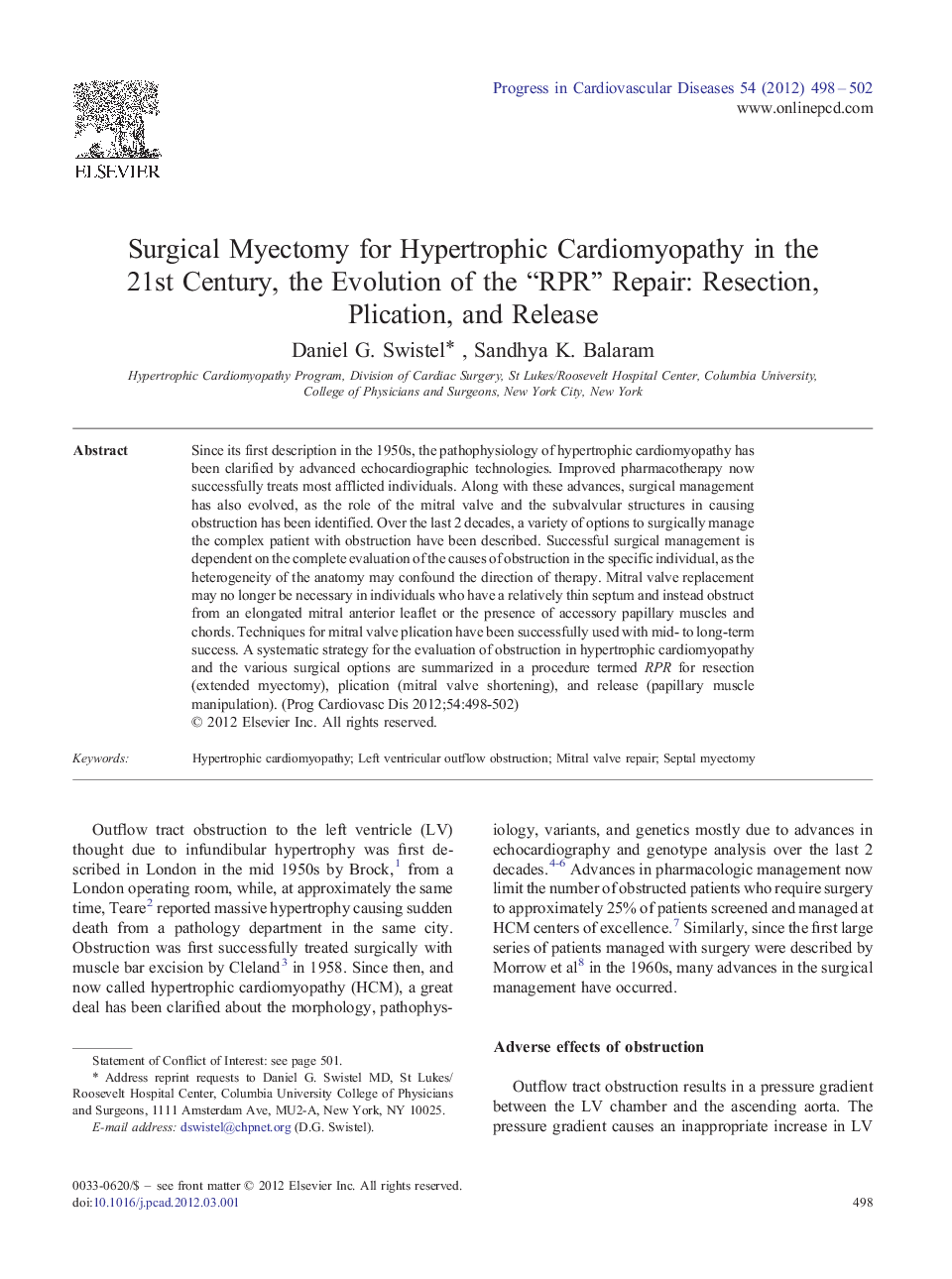| Article ID | Journal | Published Year | Pages | File Type |
|---|---|---|---|---|
| 3006861 | Progress in Cardiovascular Diseases | 2012 | 5 Pages |
Since its first description in the 1950s, the pathophysiology of hypertrophic cardiomyopathy has been clarified by advanced echocardiographic technologies. Improved pharmacotherapy now successfully treats most afflicted individuals. Along with these advances, surgical management has also evolved, as the role of the mitral valve and the subvalvular structures in causing obstruction has been identified. Over the last 2 decades, a variety of options to surgically manage the complex patient with obstruction have been described. Successful surgical management is dependent on the complete evaluation of the causes of obstruction in the specific individual, as the heterogeneity of the anatomy may confound the direction of therapy. Mitral valve replacement may no longer be necessary in individuals who have a relatively thin septum and instead obstruct from an elongated mitral anterior leaflet or the presence of accessory papillary muscles and chords. Techniques for mitral valve plication have been successfully used with mid- to long-term success. A systematic strategy for the evaluation of obstruction in hypertrophic cardiomyopathy and the various surgical options are summarized in a procedure termed RPR for resection (extended myectomy), plication (mitral valve shortening), and release (papillary muscle manipulation).
